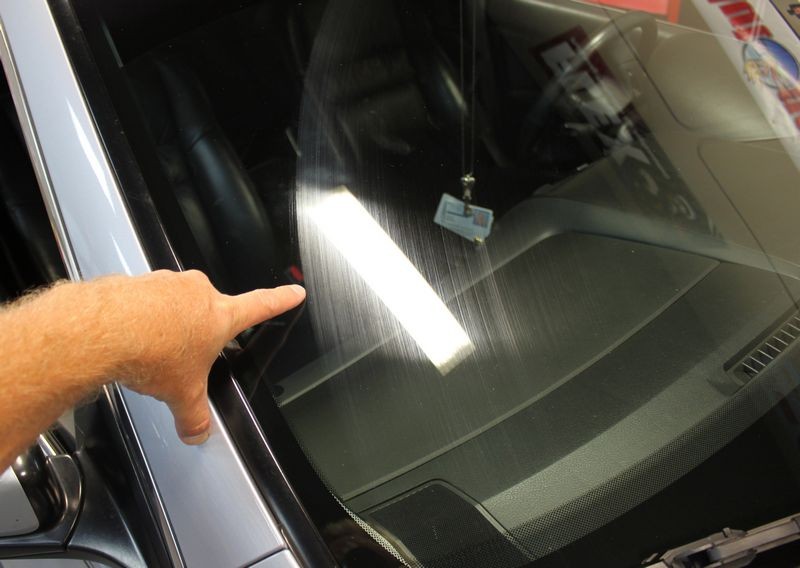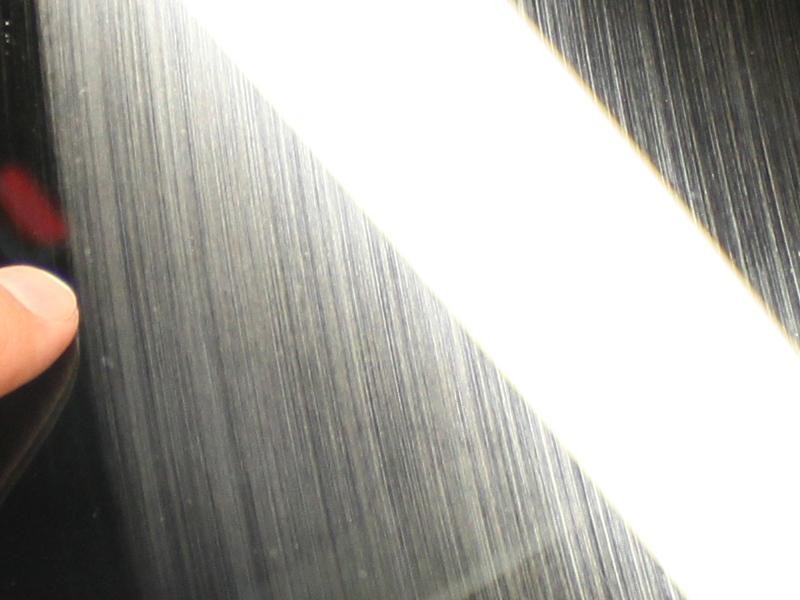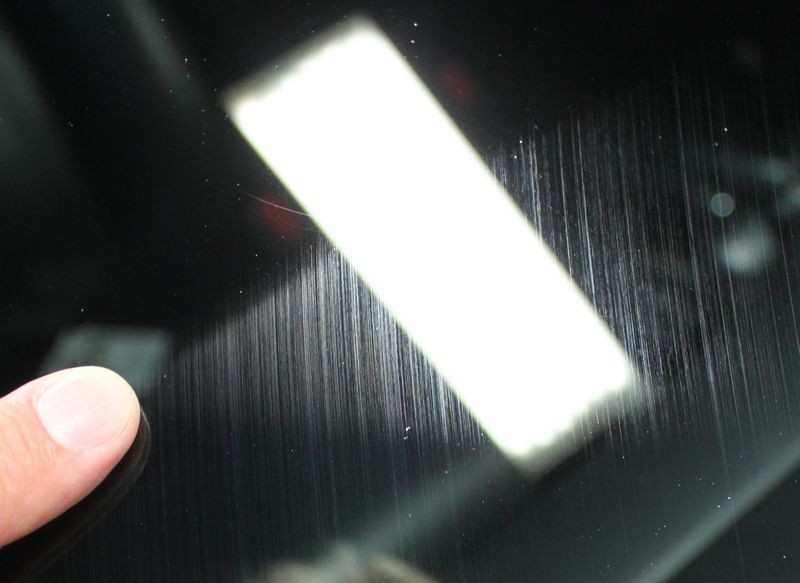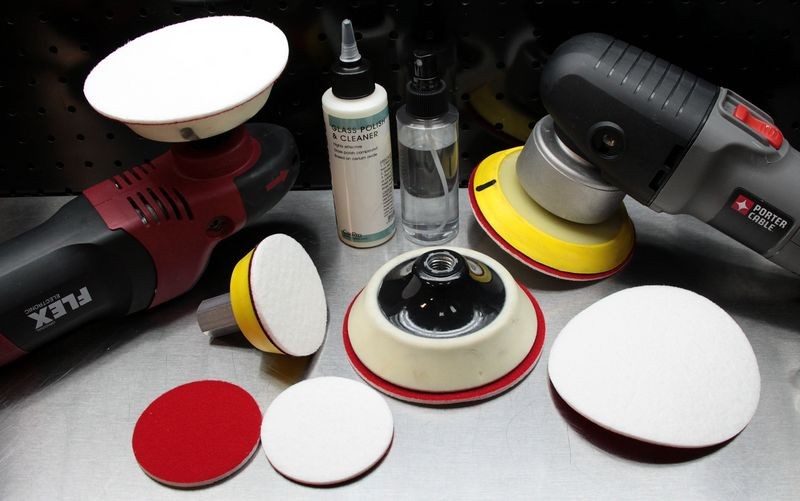MasterBlaster
New member
- Dec 14, 2018
- 7
- 0
So I did something pretty stupid a couple weeks ago when sparks from my angle grinder flew close enough to my truck's windshield to make contact and cause pitting... Lesson learned. At the time, I never would've thought it would cause pits because I felt it was far enough away from the truck for the sparks not to be hot enough to cause problems on the off chance they did make contact. Same thing where the force of the sparks were concerned, too. What's odd is that the same sparks made contact with various plastic things on the workbench that were closer to the work piece and none of them were damaged at all. I can't explain it. Maybe my truck's windshield is just some cheap kind? Either way, and again, lesson learned.
But now I need to try and fix this because I want to avoid replacing the windshield if I can. It's not so bad that the truck can't be driven or anything, so that's good, but it's visible enough (especially from inside the cap) for me to want to repair it if possible.
I watched Mike's video here where he attempted to remove various glass imperfections and tried to do some Q&As about how much his approach in the video can fix the issues before one should just resign to replacing the entire windshield. I think I'm right at the point of severity where it's just shy of needing to be replaced. Many of the pits are about the size of a teeny-tiny ballpoint pen ball-tip, so I want to believe it's repairable with the right products and techniques.
After watching his video above, I tried to take a wack at this situation a few different times using the following products:
- Porter-Cable 6" Variable-Speed Random Orbit Sander.
- 2-pack of Poliwell 6" Hook-and-Loop Interface Pads.
- 3-pack of Griot's Garage 10614 6" Glass Polishing Pads.
- The CarPro Ceriglass Kit (entirely for the compound as at the time, I couldn't find any CeriGlass compound-only products on Amazon).
- Griot's Garage 11033 Glass Sealant.
The first time I tried this, I do think it helped. The pits aren't as visible on the outside as they were, which is good! But from inside the cab, it's almost like I've made no progress. So I tried to go at it a second time with more aggressive action. As a result, I wound up burning through one of the interface pads with my highest setting on the sander and really pushing downward onto the glass. I learned a lot by doing this, but after taking this approach to the limits, I feel that it's just not getting the results I was hoping for. Am I being impatient? It's making me wonder if I'm needing different pads or compound. The pads I bought for this situation are specifically for glass polishing but nowhere in their product description are they listed as actual *cutting* pads, which I've seen for other pad sizes--I couldn't find actual cutting pads for my 6" polisher. Do they make 6" glass cutting pads or am I going to be forced to convert to something like 5" or 5.5"?
I also saw (just today) how Mike did something similar here where he explained how he used "Diamondite Glass Resurfacing Creme" (and luckily, I found some on Amazon, so I can buy that if I need to). Should I use that compound instead of the Ceriglass stuff? I'm assuming they both contain Cerium Oxide, which I understand as being mission-critical for this kind of situation as it provides the kind of abrasive one needs to level the glass enough to get at the imperfection.
Maybe what I have will work with a few more passes? One thing I've read is that polishing imperfections out of glass takes a long time, so maybe I should just be patient and keep using what I've got a few more times?
Any insight into this would be appreciated and thanks in advance.
But now I need to try and fix this because I want to avoid replacing the windshield if I can. It's not so bad that the truck can't be driven or anything, so that's good, but it's visible enough (especially from inside the cap) for me to want to repair it if possible.
I watched Mike's video here where he attempted to remove various glass imperfections and tried to do some Q&As about how much his approach in the video can fix the issues before one should just resign to replacing the entire windshield. I think I'm right at the point of severity where it's just shy of needing to be replaced. Many of the pits are about the size of a teeny-tiny ballpoint pen ball-tip, so I want to believe it's repairable with the right products and techniques.
After watching his video above, I tried to take a wack at this situation a few different times using the following products:
- Porter-Cable 6" Variable-Speed Random Orbit Sander.
- 2-pack of Poliwell 6" Hook-and-Loop Interface Pads.
- 3-pack of Griot's Garage 10614 6" Glass Polishing Pads.
- The CarPro Ceriglass Kit (entirely for the compound as at the time, I couldn't find any CeriGlass compound-only products on Amazon).
- Griot's Garage 11033 Glass Sealant.
The first time I tried this, I do think it helped. The pits aren't as visible on the outside as they were, which is good! But from inside the cab, it's almost like I've made no progress. So I tried to go at it a second time with more aggressive action. As a result, I wound up burning through one of the interface pads with my highest setting on the sander and really pushing downward onto the glass. I learned a lot by doing this, but after taking this approach to the limits, I feel that it's just not getting the results I was hoping for. Am I being impatient? It's making me wonder if I'm needing different pads or compound. The pads I bought for this situation are specifically for glass polishing but nowhere in their product description are they listed as actual *cutting* pads, which I've seen for other pad sizes--I couldn't find actual cutting pads for my 6" polisher. Do they make 6" glass cutting pads or am I going to be forced to convert to something like 5" or 5.5"?
I also saw (just today) how Mike did something similar here where he explained how he used "Diamondite Glass Resurfacing Creme" (and luckily, I found some on Amazon, so I can buy that if I need to). Should I use that compound instead of the Ceriglass stuff? I'm assuming they both contain Cerium Oxide, which I understand as being mission-critical for this kind of situation as it provides the kind of abrasive one needs to level the glass enough to get at the imperfection.
Maybe what I have will work with a few more passes? One thing I've read is that polishing imperfections out of glass takes a long time, so maybe I should just be patient and keep using what I've got a few more times?
Any insight into this would be appreciated and thanks in advance.



